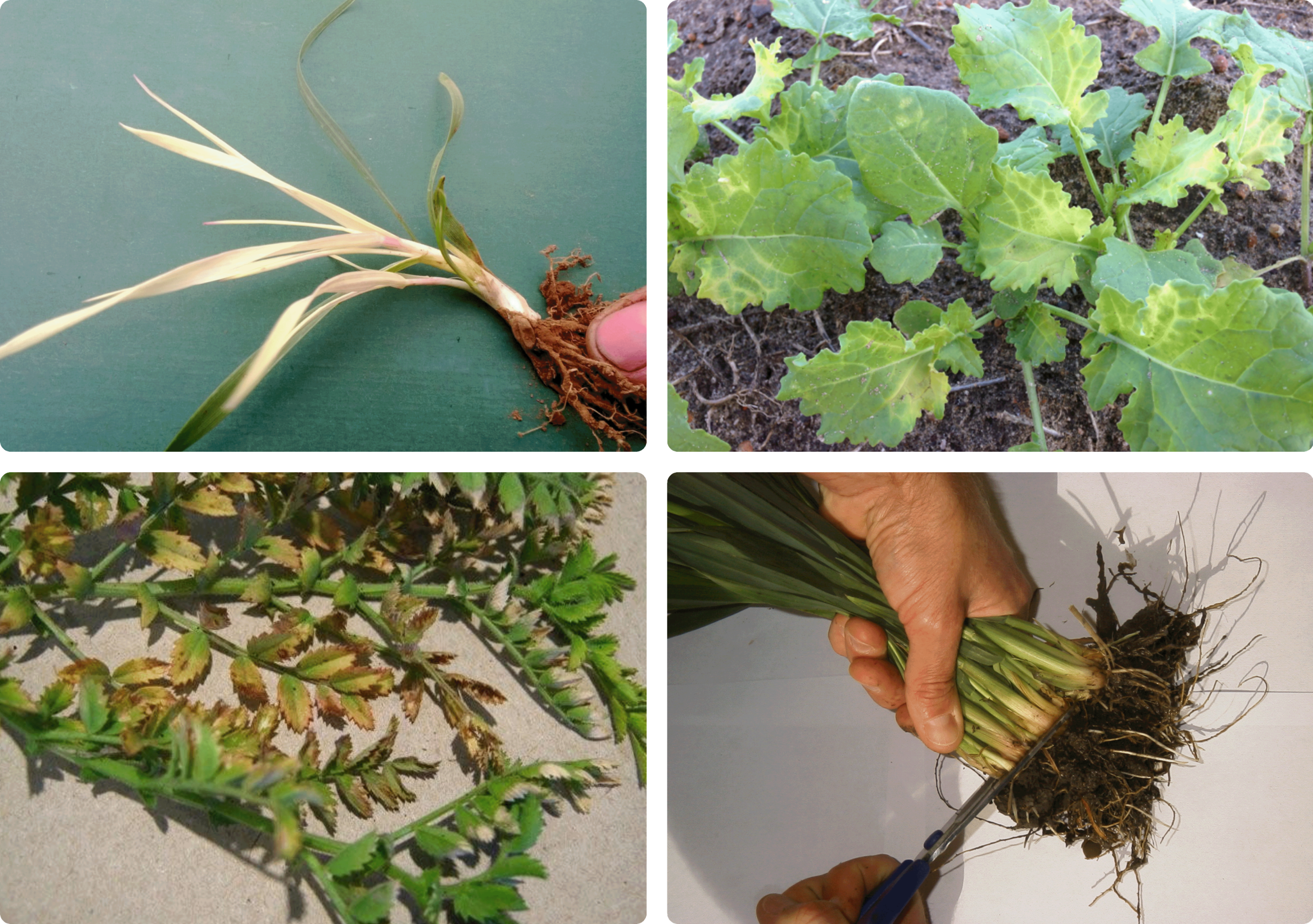Why plant tissue sample?
Plant tissue sampling provides a real-time view of what the crop is actually taking up, not just what’s available in the soil. It reveals nutrient limitations before symptoms appear and yield potential is lost.
Used correctly, tissue analysis can:
- Detect “hidden hunger”: sub-clinical deficiencies that reduce yield before symptoms emerge
- Distinguish between nutritional issues and other stresses (e.g. disease, compaction, waterlogging)
- Validate whether fertiliser or amendment applications are being taken up as expected
- Inform in-season adjustments to maintain crop potential
- Estimate nutrient removal for better nutrient budgeting
Soil tests estimate what should be available. Plant analysis confirms whether the crop has been able to access it under current conditions.

What can plant sampling tell me that soil sampling can’t?
Plant sampling captures the integrated outcome of soil, crop, weather, and management interactions. It adds critical insight when:
- Nutrient availability is affected by water stress, pH, soil structure, or root disease
- Fertilisers have been deep banded or fertigated, and uptake is unclear
- There are unexplained differences in crop growth or NDVI
A soil test tells you what’s potentially available in the root zone. Plant testing tells you whether it’s actually being taken up.
When to sample
Timing, technique, and sample quality all affect result interpretability. Best practice includes:
- Sampling the correct plant part, at the correct growth stage
- Avoiding sampling during or immediately after stress (heat, frost, drought, irrigation)
- Using the same method, time of day, and lab for repeatable results
- Following lab-specific instructions for handling, packaging, and analysis
Examples:
- Wheat: early tillering to stem elongation (GS21–31) is ideal for tissue testing
- Cotton: test between squaring and peak flowering to assess N, K and preflowering for micronutrient uptake.
See your results in context with SoilMate
SoilMate connects the dots between soil, plant, and management history to help advisors interpret results quickly and in context.
- Upload lab results and compare to critical values for crop and stage
- Visualise nutrient trends across paddocks or time
- Combine with soil test data to make more confident decisions
